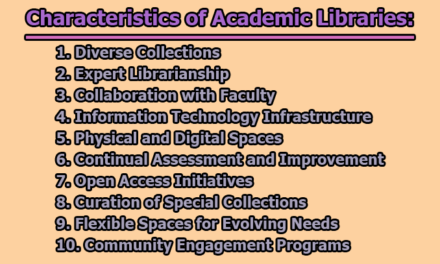How to Promote the Use of Digitized Materials in Your Library:
The digital age has transformed the way libraries store, access, and share information. Digitized materials have become invaluable resources that can enhance a library’s collections, services, and outreach. They not only make information more accessible but also help preserve and share a library’s unique cultural heritage and knowledge. To make the most of these digitized resources, effective promotion is key. In this article, we will explore practical tips on how to promote the use of digitized materials in your library.
1. Identify Your Goals and Users: Before embarking on a promotion campaign, it’s essential to identify your goals and target audience. Consider what you aim to achieve with your digitized materials. Are you looking to increase awareness, access, engagement, or impact? Do you want to attract new users, retain existing ones, or collaborate with partners? Are your digitized materials best suited for researchers, educators, students, or the general public? Clearly defining your objectives and audience will help tailor your promotion strategies effectively.
2. Showcase Your Digital Collections: Website and Catalog: One of the most effective ways to promote your digitized materials is by showcasing them on your library’s website and catalog. Create attractive and informative landing pages, banners, slideshows, or widgets that highlight your digital collections and link to them. Ensure that your website is user-friendly, making it easy for visitors to discover and access your digitized resources.
- Social Media: Utilize your library’s social media platforms to reach a broader audience. Share regular updates about your digital collections, using engaging visuals and informative posts. Encourage users to explore and share the content with their networks.
- Newsletters and Blogs: Feature your digital collections in newsletters, blogs, podcasts, or webinars. This is an excellent opportunity to provide in-depth information about specific items, share stories, and invite feedback and suggestions from your users.
- Metadata and Tags: Use metadata, keywords, tags, and filters to make your digitized materials easy to find and browse. This will enhance the user experience, making it convenient for users to locate the information they seek.
3. Create Engaging Content: To make your digitized materials more appealing, consider creating engaging content that highlights their value and relevance:
- Multimedia Formats: Use various multimedia formats such as stories, videos, infographics, quizzes, or games to present your digitized materials in a compelling and interactive way. This can make the content more engaging and accessible to a broader audience.
- Thematic Connections: Connect your digitized materials to themes that align with your users’ interests and needs, such as history, culture, art, science, or current events. This can create a more significant impact and relevance for your audience.
- Utilize Tools: Explore tools like StoryMap, TimelineJS, or H5P to create and share your content easily and effectively. These tools can help you present your digitized materials in innovative and user-friendly ways.
4. Encourage Participation and Collaboration:
- User Contributions: Encourage users to contribute their own digitized materials, such as photos, documents, or oral histories, to your digital collections. This not only enriches your resources but also fosters a sense of community involvement.
- Quality Improvement: Ask users to help improve the quality and accessibility of your digitized materials by transcribing, annotating, or translating them. This collaborative approach ensures that your resources are more accurate and user-friendly.
- Collaborate with Others: Collaborate with other libraries, institutions, or organizations to create and promote joint digital collections or projects. These partnerships can expand the reach and impact of your digitized materials.
5. Evaluate and Improve Your Promotion: Regularly evaluate and improve your promotion efforts to ensure their effectiveness. Use methods such as surveys, interviews, analytics, or feedback forms to gather user input and insights. Consider using indicators like views, downloads, shares, comments, or citations to assess the use and value of your digitized materials. Based on your findings, adjust and optimize your promotion plans and practices to better achieve your goals and satisfy your users.
In conclusion, digitized materials are a treasure trove of information and knowledge that can significantly benefit your library and its users. Effective promotion is crucial to ensure that these resources are utilized to their full potential. By identifying your goals and audience, showcasing your collections, creating engaging content, encouraging participation and collaboration, and regularly evaluating and improving your promotion strategies, you can enhance the accessibility and impact of your digitized materials, ultimately enriching your library’s offerings and reaching a wider audience.

Library Lecturer at Nurul Amin Degree College










